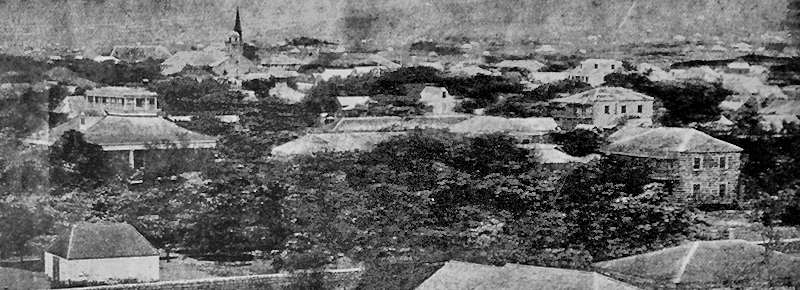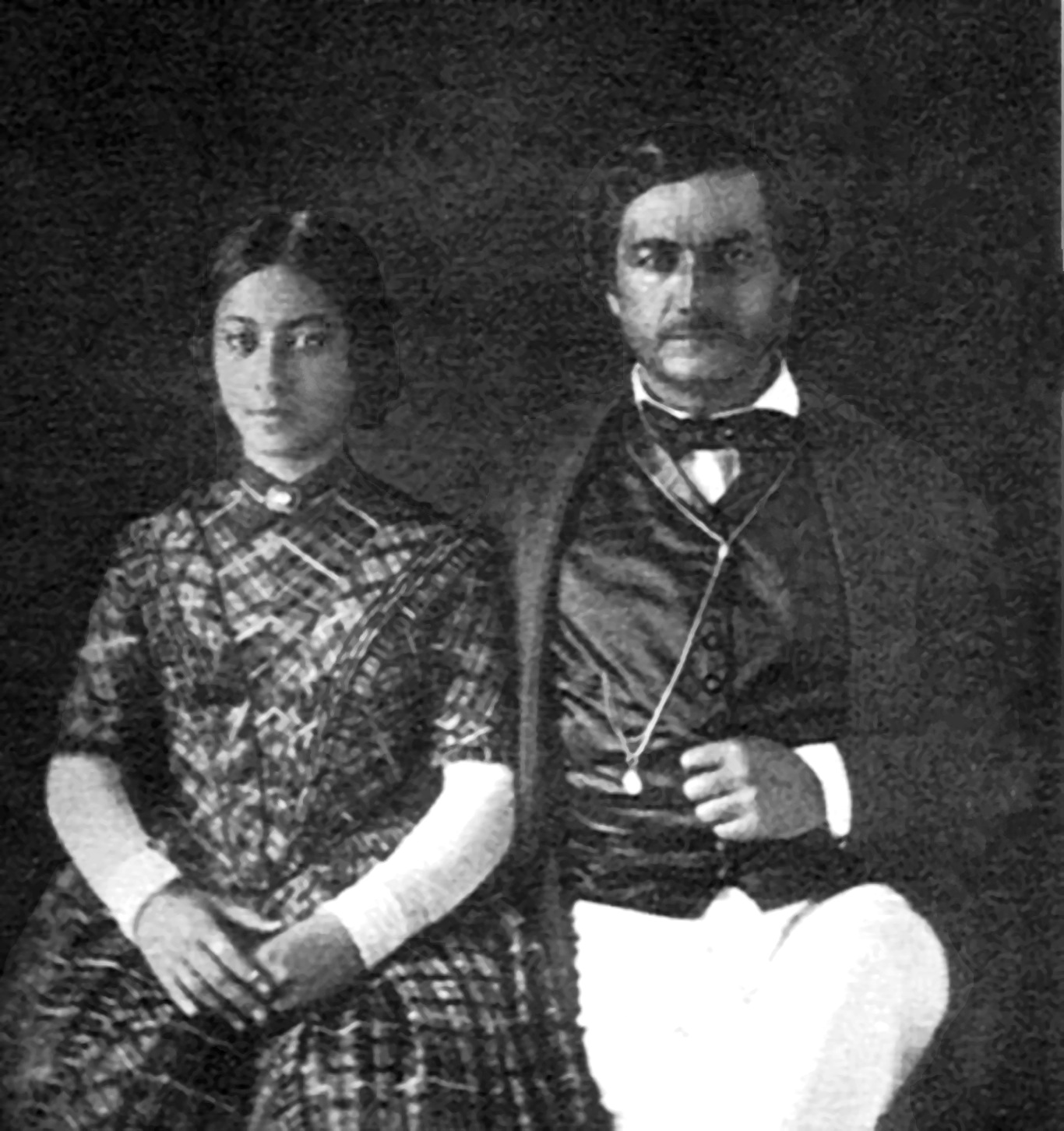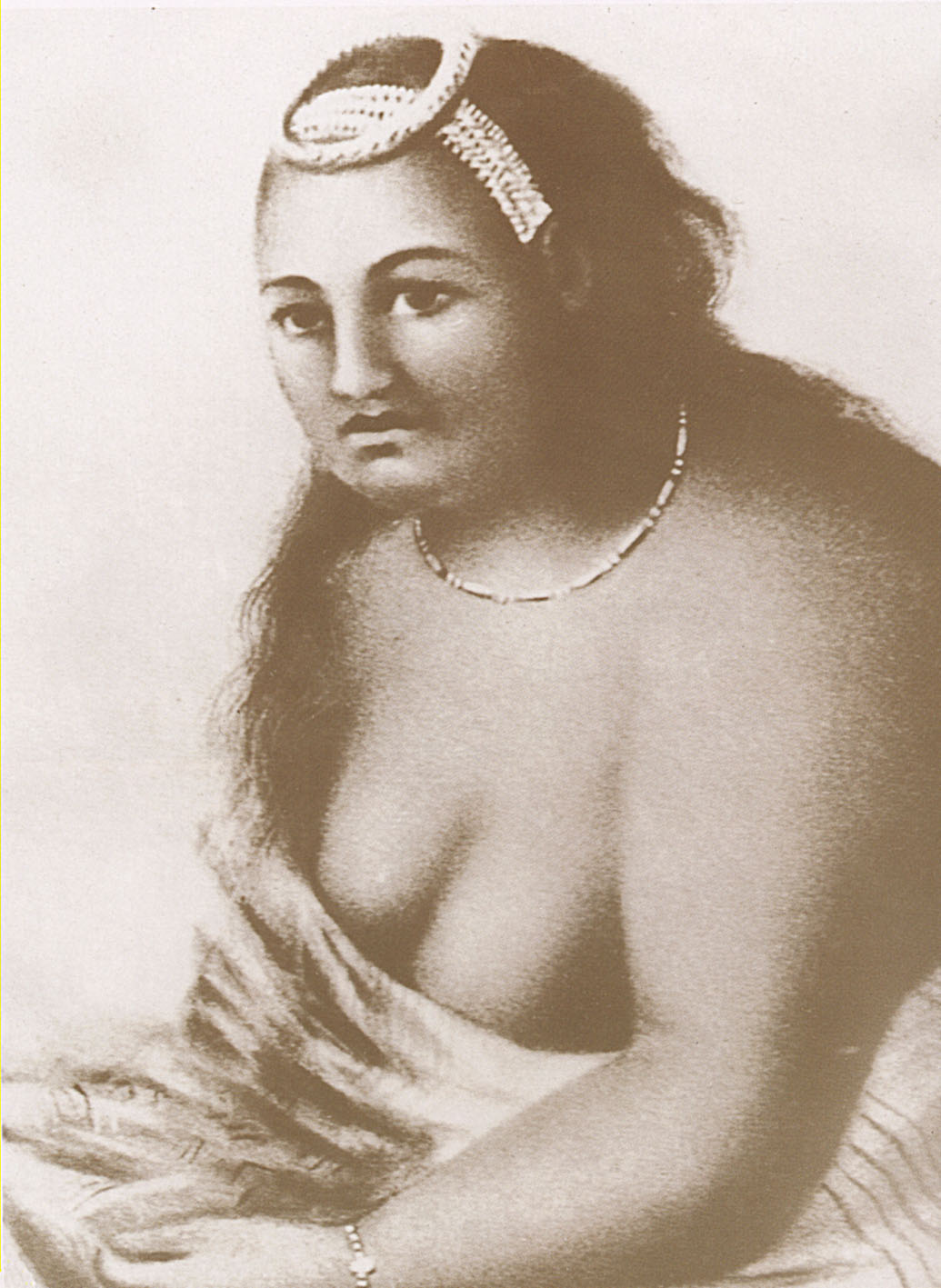|
Kekāuluohi
Miriam Auhea Kalani Kui Kawakiu o Kekāuluohi Kealiʻiuhiwaihanau o Kalani Makahonua Ahilapalapa Kai Wikapu o Kaleilei a Kalakua also known as Kaahumanu III (July 27, 1794 – June 7, 1845), was Kuhina Nui of the Hawaiian Kingdom, Kingdom of Hawaii, a queen consort of both Kamehameha I and Kamehameha II, and mother of Lunalilo. In ''Hawaiian language, ʻŌlelo Hawaiʻi'' (Native Hawaiian language), ''Kekāuluohi'' means; "the vigorously growing vine". She adopted her secondary name ''Auhea'', meaning ''Where, oh where,'' in memory of the death of Kamehameha I. Birth and ancestry Kekāuluohi was born in 1794, the only daughter of her father High Chief Kalaimamahu (half-brother of Kamehameha I) with her mother Kalākua Kaheiheimālie of Maui, who was also a wife of Kamehameha I. She was ''hānai'' to (adopted by) her grandparents Namahana and Keeaumoku Pāpaiahiahi, Keeaumoku, who "fondled her as if she were a feather lei from the precious mamo bird." Through her mother she was a ... [...More Info...] [...Related Items...] OR: [Wikipedia] [Google] [Baidu] |
Charles Kanaʻina
Charles Kanaʻina (Kanaʻina II; May 4, 1798 – March 13, 1877) was an aliʻi (hereditary noble) of the Hawaiian Kingdom, Kingdom of Hawaii, prince consort of Kuhina Nui, Kaʻahumanu III and father of Lunalilo, William Charles Lunalilo, the 6th monarch of the House of Kamehameha, Kamehameha Dynasty. Kanaʻina was a descendant of several figures from ancient History of Hawaii, Hawaiian history, including Līloa, Liloa, Hakau and Umi-a-Liloa of Hawaii Island as well as Piʻilani, Piilani of Maui. He served on both the Privy Counsel and in the House of Nobles. He was named after his uncle Kalaimanokahoʻowaha, Kanaʻina, a name that means "The conquering" in the Hawaiian language, Hawaiian Language. This uncle greeted James Cook, Captain James Cook in 1778 and confronted the navigator before he was killed. His wife Kekāuluohi, Miriam Auhea Kekāuluohi was a widow and niece of Kamehameha I. She was also married to Kamehameha II before he converted to Christianity and gave up all ... [...More Info...] [...Related Items...] OR: [Wikipedia] [Google] [Baidu] |
Lunalilo
Lunalilo (William Charles Lunalilo; January 31, 1835 – February 3, 1874) was the sixth monarch of the Kingdom of Hawaii from his election on January 8, 1873, until his death a year later. Born to Kekāuluohi and High Chief Charles Kanaʻina, he was of royal descent and a grandnephew of King Kamehameha I. He was educated at the Royal School by American missionaries and was proclaimed eligible for the throne by King Kamehameha III. After the death of King Kamehameha V, he was elected to the throne in 1873 by a unanimous decision of the legislature of the kingdom. Due to his popularity and status as Hawaii's first elected monarch, he became known as "The People's King". He died a year later from tuberculosis. Early life William Charles Lunalilo was born on January 31, 1835, in a two-story house made of coral brick, an area known as '' Pohukaina'', now part the grounds of the ʻIolani Palace in Honolulu. His mother was High Chiefess Miriam Auhea Kekāuluohi (later styled ... [...More Info...] [...Related Items...] OR: [Wikipedia] [Google] [Baidu] |
ʻIolani Palace
The Iolani Palace () was the royal residence of the rulers of the Kingdom of Hawaiʻi beginning with Kamehameha III under the Kamehameha Dynasty (1845) and ending with Queen Liliʻuokalani (1893) under the Kalākaua Dynasty. It is located in the capitol district of downtown Honolulu in the U.S. state of Hawaii. It is now a National Historic Landmark listed on the National Register of Historic Places. After the monarchy was overthrown in 1893, the building was used as the capitol building for the Provisional Government, Republic, Territory, and State of Hawaii until 1969. The palace was restored and opened to the public as a museum in 1978. ʻIolani Palace is the only royal palace on US soil. Early history Pohukaina and the House of Kamehameha In the early 19th century, the site of ʻIolani Palace was near an ancient burial site known as Pohukaina. It is believed to be the name of a chief (sometimes spelled Pahukaina) who according to legend chose a cave in Kanehoalani ... [...More Info...] [...Related Items...] OR: [Wikipedia] [Google] [Baidu] |
House Of Kamehameha
The House of Kamehameha ''(Hale O Kamehameha)'', or the Kamehameha dynasty, was the reigning royal family of the Hawaiian Kingdom, Kingdom of Hawaii, beginning with its founding by Kamehameha I in 1795 and ending with the death of Kamehameha V in 1872 and Lunalilo in 1874. The kingdom continued for another 21 years, until its overthrow in 1893 with the fall of the House of Kalākaua, House of Kalakaua. Origins of the Kamehameha dynasty Originating lines The origins of the House of Kamehameha stems from the progenitor, Keōua, Keōua Kalanikupuapa`ikalaninui who was the sacred father of Kamehameha I and by the royal court of his brother Kalaniʻōpuʻu who later became king and gave his war god Kū, Kuka'ilimoku to Kamehameha I. Kalaniʻōpuʻu's father was Kalaninuiamamao, Kalaninuiʻīamamao and Keōua's father was Kalanikeʻeaumoku, both were sons of Keaweʻīkekahialiʻiokamoku. They shared a common mother, Kamakaimoku, Kamakaʻīmoku. Both brothers served Alapainui, Alapaʻ ... [...More Info...] [...Related Items...] OR: [Wikipedia] [Google] [Baidu] |
Kīnaʻu
Princess Kalani Ahumanu i Kaliko o Iwi Kauhipua o Kīnau, also known as Elizabeth Kīnau ( – April 4, 1839) was Kuhina Nui of the Kingdom of Hawaii as Kaahumanu II, queen regent and dowager queen. Life Her father was King Kamehameha I and her mother was Kalākua Kaheiheimālie. She was born probably in 1805 on the island of Oahu at Waikiki. She was given in '' hānai'' to her stepmother Peleuli and her second husband Kawelookalani, her father's half-brother. Peleuli named her Kīnau after her son Kahōanokū Kīnau (her half-brother) and took her back to the island of Hawaii after Kamehameha moved his capital back to Kailua-Kona. Kīnau was first married to her half-brother Liholiho (1797–1824) who ascended in 1819 as King Kamehameha II. In 1824, at around 19 years of age, she became Dowager Queen when Kamehameha II died in London with his favorite wife (her sister) Queen Kamāmalu. Her second husband was Kahalaia Luanuu, a grandson of Kamehameha I. She had a ... [...More Info...] [...Related Items...] OR: [Wikipedia] [Google] [Baidu] |
Kalākua Kaheiheimālie
Kalākua Kaheiheimālie, later known as Hoapili Wahine (–1842) was a member of Hawaiian royalty who was one of the queen consorts at the founding of the Kingdom of Hawaii. She was the mother of another queen consort, and grandmother of two future kings. Some sources call her Kaheihei''maile'' rather than Kaheihei''mālie''. "Mālie" means serene while the " maile" is the vine ''Alyxia olivaeformis''. The second spelling seems to be older and more appropriate. Life She was born c. 1778 into a noble ('' ali'i'') family of Maui. Her father was Keʻeaumoku Pāpaʻiahiahi, a noble from Hawaiʻi Island. Her mother was Nāmāhānaʻi Kaleleokalani, the former consort of her half-brother the late king of Maui, Kamehameha Nui. From her mother she was a member of the royal house of Maui. Her siblings included Hawaiʻi island Governor John Adams Kuakini, Queen Kaʻahumanu, Maui Governor George Cox Kahekili Keʻeaumoku II, and Lydia Namahana Piʻia. Her father became an advisor and ... [...More Info...] [...Related Items...] OR: [Wikipedia] [Google] [Baidu] |
Keoni Ana
Keoni Ana, full name John Kalaipaihala Young II (March 12, 1810 – July 18, 1857), was a politician in the Kingdom of Hawaii, serving as Kuhina Nui of the Hawaiian Islands and Minister of Interior. Early life Keoni Ana was born on March 12, 1810, in Kawaihae, Hawaii. He was the only son of John Young, the English sailor who became a trusted adviser to King Kamehameha I, by his second wife Kaʻōanaʻeha, the niece of Kamehameha I. He was the elder brother of Jane Lahilahi, younger brother of Fanny Kekelaokalani and Grace Kamaikui, and younger half-brother of James Kānehoa and Robert Young. He, his siblings, and Isaac Davis' children, grew up on their father's homestead granted to them by the king, overlooking the Kawaihae Bay. It is now part of the Puʻukoholā Heiau National Historic Site. Politics He grew up as the favorite companion of Prince Kauikeaouli, who took the throne as King Kamehameha III. The two friends' relationship was severely damaged when Keon ... [...More Info...] [...Related Items...] OR: [Wikipedia] [Google] [Baidu] |
Kamehameha II
Kamehameha II (November 1797 – July 14, 1824) was the second king of the Hawaiian Kingdom, Kingdom of Hawaii from 1819 to 1824. His birth name was Liholiho and full name was Kalaninui kua Liholiho i ke kapu ʻIolani. It was lengthened to Kalani Kaleiʻaimoku o Kaiwikapu o Laʻamea i Kauikawekiu Ahilapalapa Kealiʻi Kauinamoku o Kahekili Kalaninui i Mamao ʻIolani i Ka Liholiho when he took the throne. Due to his young age, his power was limited and he was controlled under Ka'ahumanu, the queen consort of his father Kamehameha I. However, Kamehameha II is disreputably known for the 'Ai Noa, when he broke traditional religious laws, leading to a lengthened period of taboo-breaking, the disbanding of the social class of priest, and the destruction of heiau, temples and images. With increased European contact, Christianity and Western influence began to appear during his reign. Early life Kamehameha II was born in the month of Hanaiaʻeleʻele (corresponding to November) 1797 in ... [...More Info...] [...Related Items...] OR: [Wikipedia] [Google] [Baidu] |
Victoria Kamāmalu
Victoria Kamāmalu Kaʻahumanu IV (November 1, 1838 – May 29, 1866) was ''Kuhina Nui'' of Hawaii and its crown princess. Named Wikolia Kamehamalu Keawenui Kaʻahumanu-a-Kekūanaōʻa and also named Kalehelani Kiheahealani, she was mainly referred to as Victoria Kamāmalu or Kaʻahumanu IV, when addressing her as the ''Kuhina Nui''. In her role of Kuhina Nui, she acted as Regent between the death of the King in 1863 until the election of a new King the same year. Family Born at the Honolulu Fort, on November 1, 1838, she was the only daughter of Kīnaʻu, Elizabeth Kīnaʻu (Kaʻahumanu II) and her third husband Kekūanaōʻa, Mataio Kekūanaōʻa. Through her mother she was granddaughter of King Kamehameha I, founder of the united Hawaiian Kingdom. Her two brothers would later become kings of Hawaii as Kamehameha IV and Kamehameha V. She was named after her maternal aunt Kamāmalu, Queen Kamāmalu, the consort of Kamehameha II, who died in London from the measles. The Christ ... [...More Info...] [...Related Items...] OR: [Wikipedia] [Google] [Baidu] |
Manono II
Manono II (died 1819) was a Hawaiian chiefess and member of the royal family during the Kingdom of Hawaii. She along with her second husband Keaoua Kekuaokalani died fighting for the Hawaiian religion after Kamehameha II abolished the kapu system. Biography Manono's father was Kekuamanoha, and her mother was Kalola-a-Kumukoʻa, the wife of Kamehameha before his victory at the Battle of Mokuʻōhai. Through her father she was a granddaughter of Kekaulike, the King or Moʻi of Maui. From her mother's side, she was the great-granddaughter of King Keaweʻīkekahialiʻiokamoku of Hawaiʻi. Her half-siblings from her father's first marriage were Kalanimoku, Boki, and Wahinepio. She was the cousin of Kaʻahumanu, Kalākua Kaheiheimālie, and Namahana Piʻia, Kuakini, Governor of Hawaiʻi; and Keʻeaumoku II. Around 1809, while still in her youth, Manono was chosen along with her cousin Kekāuluohi by Kamehameha I "to warm his old age" thus becoming the old king's last two wi ... [...More Info...] [...Related Items...] OR: [Wikipedia] [Google] [Baidu] |
Kuhina Nui
Kuhina Nui was a powerful office in the Kingdom of Hawaii from 1819 to 1864. It was usually held by a relative of the king and was the rough equivalent of the 19th-century European office of Prime Minister or sometimes Regent. Origin of the office Before the establishment of the office of ''Kuhina Nui'' by Kamehameha, there was a position called Kālaimoku (''kālai'' meaning "to carve" and ''moku'' being an island). This was an ancient office from the very dawn of Hawaiian civilization. During this time before the ''Kuhina Nui'' Kalanimoku, a trusted chief of Kamehameha, was the Kālaimoku until Kamehameha established the office of the ''Kuhina Nui''. When King Kamehameha II assumed the throne in 1819, his father's favorite wife, Queen Kaʻahumanu, told him Kamehameha I had wished for her to rule the kingdom alongside him. Whether this was really the will of Kamehameha I is a matter of debate. In either case, Kamehameha II did not object and the office of ''Kuhina Nui'' was ... [...More Info...] [...Related Items...] OR: [Wikipedia] [Google] [Baidu] |
1840 Constitution Of The Hawaiian Kingdom
The 1840 Constitution of the Hawaiian Kingdom titled was the first fully written constitution for the Hawaiian Kingdom. Overall, this version of the Constitution of Hawaii established a constitutional monarchy subjecting even the king to certain principles of democracy. Background The need for a constitution was originally intended as a manner of laws set forth to control the Native Hawaiian population with a Western style and legal framework, giving less severe punishments, such as being exiled, than was the traditional custom until the 1840s. Christianity had failed to change many behaviors of the Hawaiian population, even with the support of the families. Adultery and many other sexual relations became forbidden. Hawaiians were arrested and sentenced to severe punishments that were not well organised. The exiled had little food and could easily swim away from the islands and the prison at Honolulu Fort. The issue became worse as fewer pardons from the were available, and t ... [...More Info...] [...Related Items...] OR: [Wikipedia] [Google] [Baidu] |






